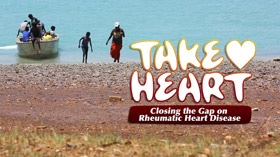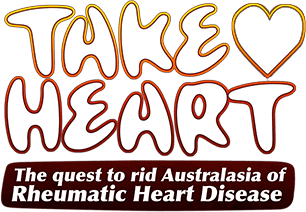SHORT FILMS
Closing the Gap on Rheumatic Heart Disease
Whose problem is this to solve? To Close the Gap, health care will need to be delivered to at-risk children, adolescents and young people where and when they need it, social housing conditions will have to be improved to reduce overcrowding, and education programs designed to improve understanding of the disease will have to be deployed.
Closing the Gap
Australia, the worlds 6th largest country by size has been inhabited by indigenous Australians for over 40 000 years. Since its settlement as a British prison a little over 200 years ago Australia has developed a liberal democratic political system. Today Australia holds the worlds 4th largest economy. The 5th highest per capita income and the 2nd highest human development index ranking, which means it’s considered to be amongst the worlds most equal societies. Why then do Australia’s first people have amongst the highest rates of a preventable disease in the world.
“When you look at the statistics around indigenous health in Australia, New Zealand and Pacific Islands as well it condemns these communities. It condemns the governments of these countries. The minority people in those countries, the first peoples of those countries still suffer so horrifically when it comes to healthcare. Rheumatic heart disease is an extraordinary example of this.” Mr Stan Grant
“Rheumatic fever, rheumatic heart disease is a disease of the disadvantaged population. In Australia rheumatic fever, rheumatic heart disease have been essentially eradicated from the non-indigenous population and this disease is very specific to our indigenous population within Australia. Most patients who have rheumatic fever, rheumatic heart disease they live in very remote and isolated locations. Rheumatic fever just doesn’t make the headlines in Australia. It’s really a disease that we should be able to prevent yet it’s still here with us.” Dr Bo Remenyi.
“Here was a disease that was fairly widespread in the mainstream community across the most populations and now is prevalent primarily amongst these small minority indigenous population. In this community in terms of the people haven’t had the awareness, they haven’t had the education, they haven’t had the access to healthcare to prevent what are entirely preventable diseases. You put this in the same basket with diseases like polio which were once very common place and have now been eradicated except once again in indigenous communities” Mr Stan Grant
“For all of the first half of last century rheumatic fever and rheumatic heart disease was well recognized by all families throughout Australia. They all knew someone or someones kid who’d had rheumatic fever, rheumatic heart disease. It was with many other illnesses of childhood a part of life in Australia and indeed the whole world. The fact that that doesn’t happen in those parts of Australia still has nothing to do with programs around rheumatic fever, rheumatic heart disease. It has all to do with such economic development and housing, and a whole lot of other perimeters in that area.” Professor Bart Currie
“you have a problem with education, you have a problem with access, you have a problem of remoteness, you have a problem of not having the right resources. Not enough money spent, not enough people who are bringing awareness and taking the medical practices to the communities themselves. This is an enormous challenge.” Mr Stan Grant
To close the gap, healthcare will need to be delivered to at risk children, adolescents and young people where and when they need it. Social housing conditions will have to be improved to reduce over crowding and education programs designed to improve understanding of the disease will have to be deployed.
“Complex situation in remote indigenous communities is how people in those communities have the benefits of such economic development, the housing and also the economic development side while also being able to have strong culture. Also have their links to traditional practices such as hunting, bush medicines, bush food, which is something that is absolutely entritic to their traditional culture but also living in circumstances where there isn’t poverty, where there’s good education.”
“Of course that’s accountable and I do think that when you look at some of the initiatives and the arts for instance, and you go out to some of the local communities and look at art centers and the cultural-ism being run and directed by indigenous people. Not so much non-indigenous people. That’s an enormous economic benefit to those indigenous families who are part of that. Potentially, you could have a whole connection of remote indigenous communities where they’re thriving with a number of economic initiatives that are making them independent financially and living in circumstances where they literally have the best of both worlds.” Professor Bart Currie
Clearly, we have a problem in this part of the world – the lives of thousands of young people are threatened.
But there’s also a solution – this disease is entirely preventable
So whose problem is this to solve?
Those most at risk?
Those in their community?
Those in the health service?
Those in the public service?
Those in the lab?
Those in power?
Ultimately, if we want to Close the Gap and authentically lay claim to an equal society – then we must view this as everyone’s problem.
If a child you know has:
Sore throat
Infected skin sores
Sore joints
OR
Fever
Don’t delay.
Go to the health clinic to check it.
Watch the Take Heart short film What is RHD?
Learn more about the Take Heart Project ‘About’
Sign Up to keep up to date with all the latest project information and short films as they release.
Tweet it out and be part of the solution ‘#takehearttv short film ‘Closing the Gap’ (add link) and authentically lay claim to an equal society then we must view this as everyone’s problem.’





















